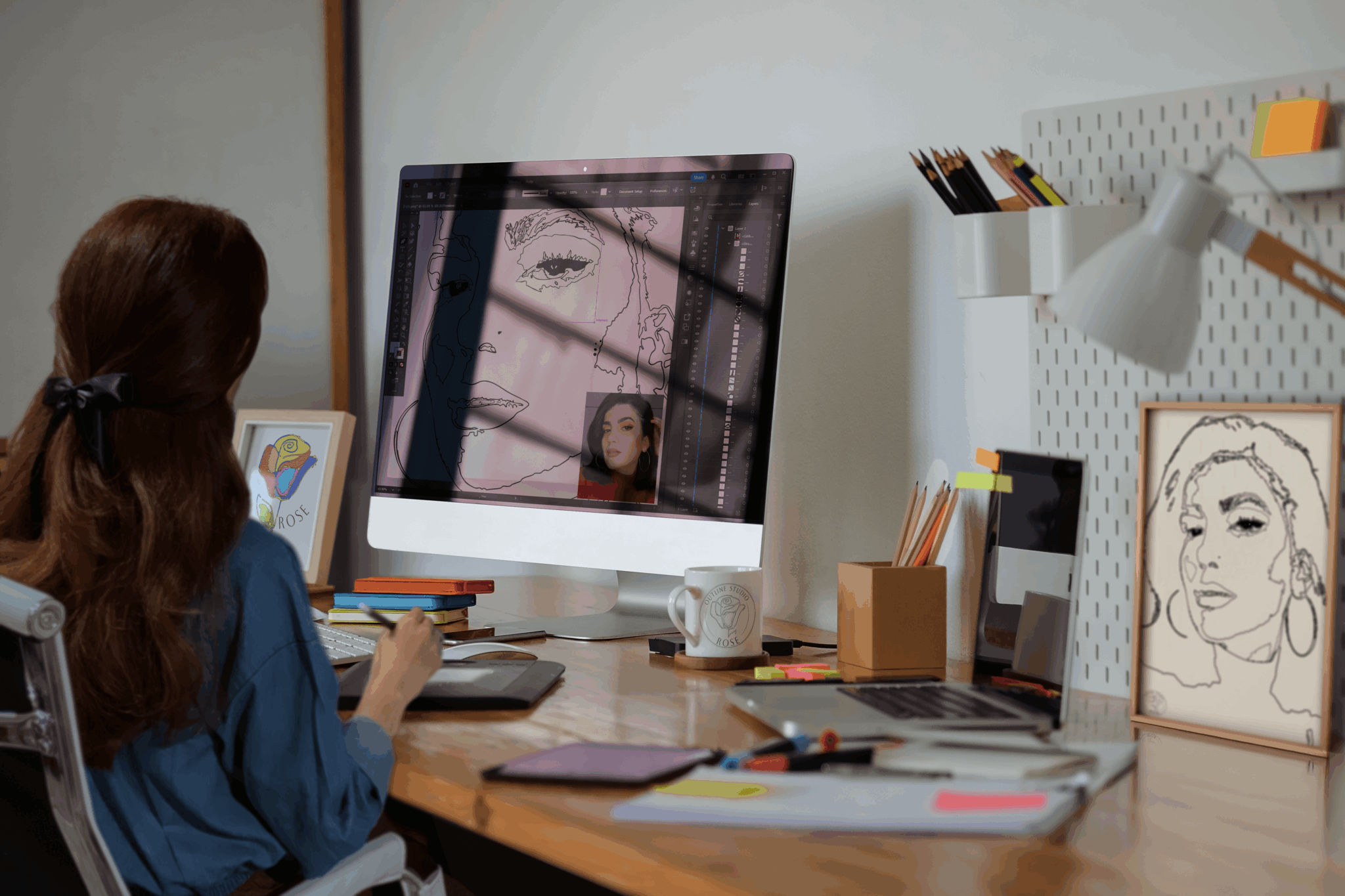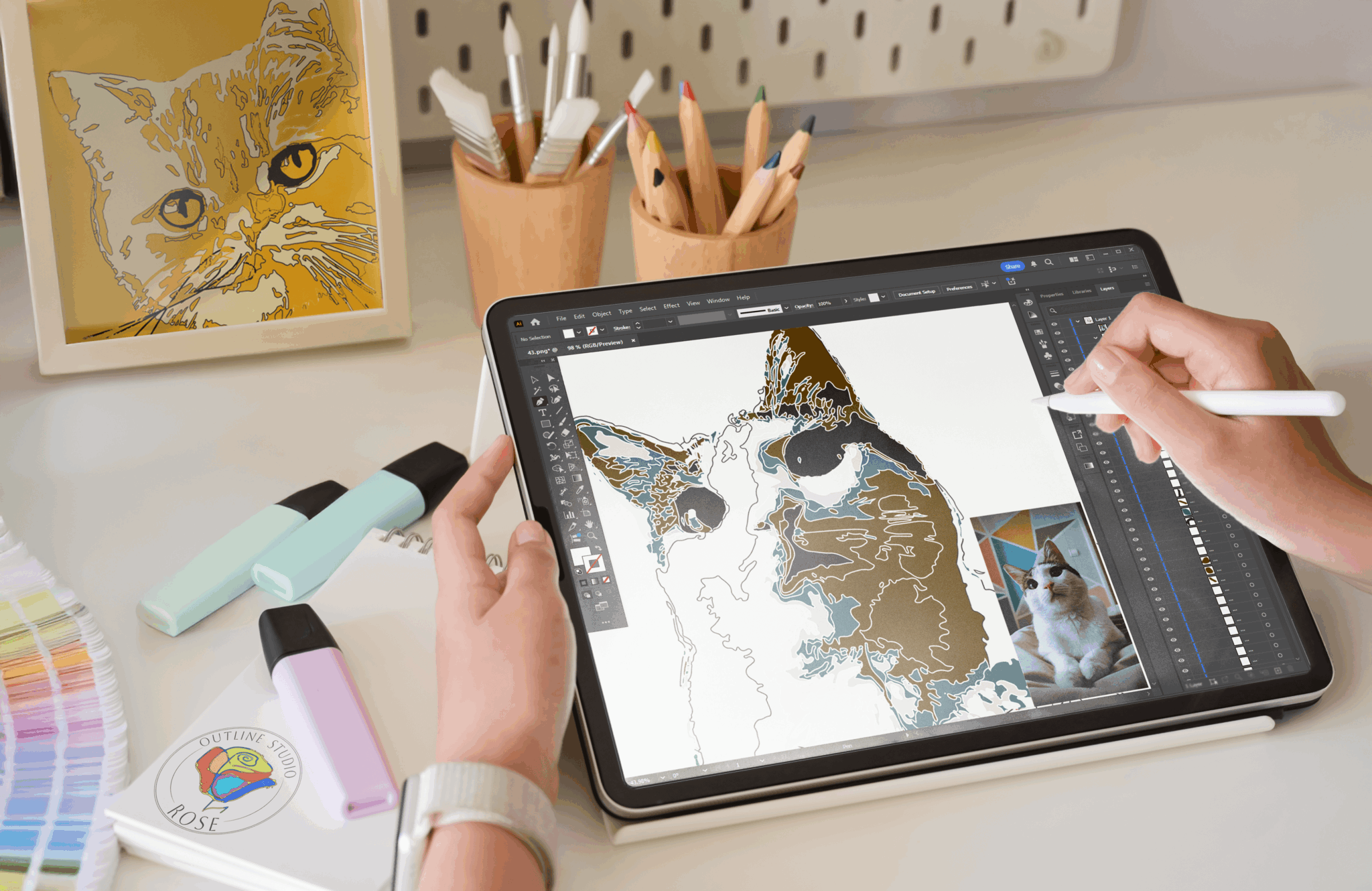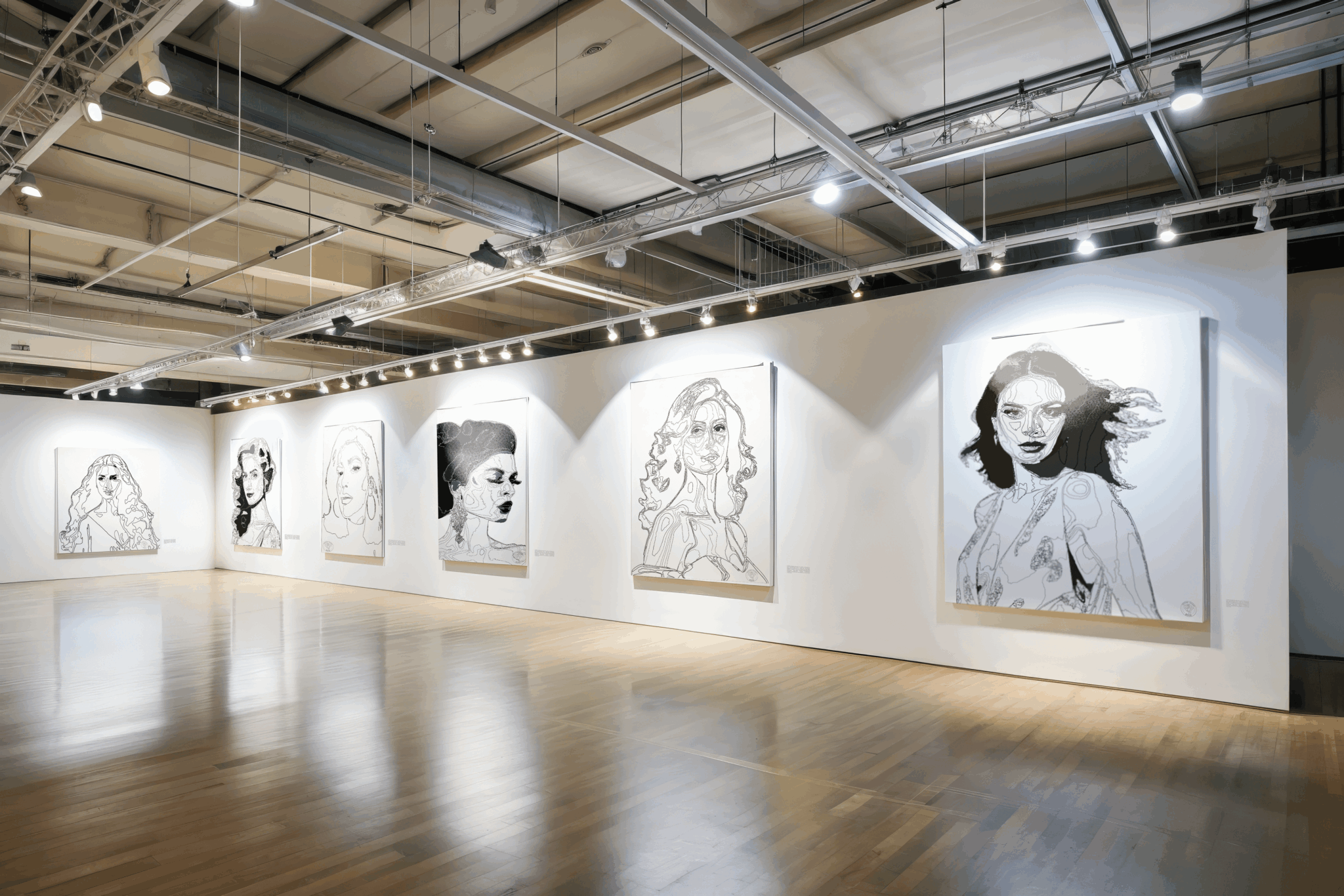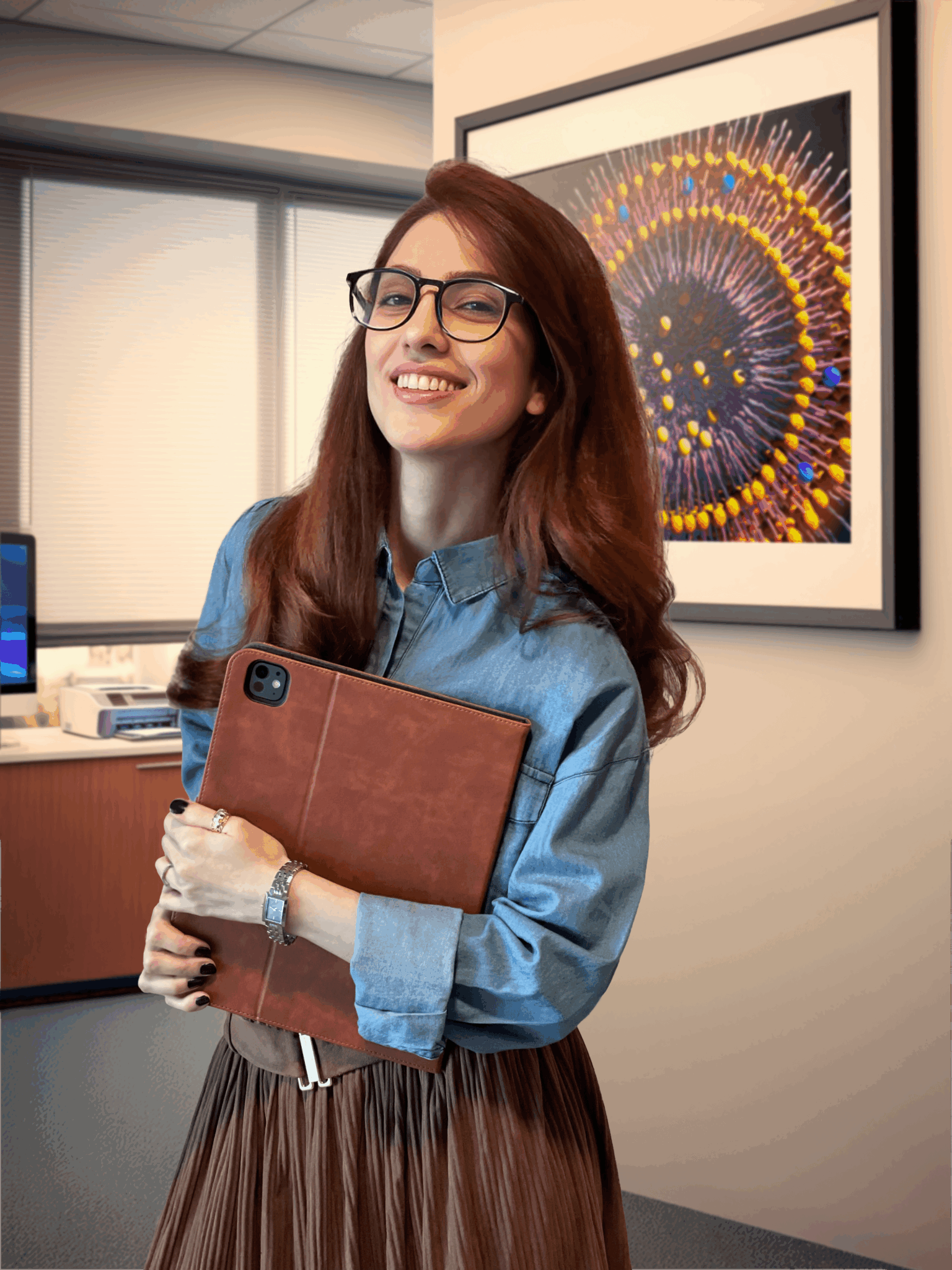Alright – so today we’ve got the honor of introducing you to Parinaz Ghanbari. We think you’ll enjoy our conversation, we’ve shared it below.
Hi Parinaz, thanks for joining us today. What’s been the most meaningful project you’ve worked on?
Hello! Thank you so much for inviting me to share my story—it’s truly an honor to be part of this interview.
For me, one of the most meaningful projects I’ve worked on was creating a scientific illustration for the North Dakota State University (NDSU) COBRE Center for Diagnostic and Therapeutic Strategies in Pancreatic Cancer. This project holds a special place in my heart because it bridged my passion for art and science while contributing to a cause that can change lives.
The backstory starts when I was approached by a professor at NDSU to design a scientific graphic as part of their grant application to the National Institutes of Health (NIH). They needed a visually compelling and accurate illustration to communicate their groundbreaking research on pancreatic cancer detection and therapies. I was honored to take on the challenge.
This project was meaningful on multiple levels. First, it was a major milestone for me professionally—it was one of the first opportunities where my work directly contributed to securing significant funding. The illustration played a key role in helping the team win nearly $10 million in Phase 2 funding, ensuring their vital research could continue for another five years. Knowing my work supported life-saving research gave me an incredible sense of fulfillment.
Second, on a personal level, it was deeply inspiring to see how art can make science more accessible and engaging. I poured my heart into crafting every detail, ensuring the graphic was not only visually appealing but also scientifically accurate. This project reaffirmed my belief in the power of collaboration between creative and scientific fields.
Looking back, this project wasn’t just about designing an illustration—it was about being part of something bigger, something that could make a real difference in the world. It’s projects like this that remind me why I love what I do and inspire me to keep pushing the boundaries of my creativity.

Great, appreciate you sharing that with us. Before we ask you to share more of your insights, can you take a moment to introduce yourself and how you got to where you are today to our readers.
I am a scientific illustrator with a primary focus on designing grant proposals and abstracts, scientific papers, scientific journals, and scientific presentations. I began this journey with a passion for combining science and art, and I have been able to help researchers and healthcare professionals communicate complex scientific concepts in a clear, visually appealing, and professional way. My work often involves creating designs that enhance the chances of acceptance for papers or grants. I accomplish this through platforms such as LinkedIn and Fiverr and have had the privilege of collaborating with renowned researchers and institutions.
In addition, I am the owner of Rose Outline Studio, which specializes in creating digital art and creative designs. In this area, I focus on custom line art that is inspired by family photos, newborns, and special moments. My goal is to transform these beautiful moments into timeless pieces of art that make for perfect gifts or keepsakes.
What sets me apart is my ability to blend the world of science with art. Whether it’s in scientific designs for grants and papers or creating personal artwork, I always strive to meet my clients’ needs with the highest quality and professionalism.

We’d love to hear a story of resilience from your journey.
One of the most significant moments in my professional journey was when I decided to transition from working as a freelance graphic designer to establishing my own studio, Rose Outline Studio. This decision came with a lot of uncertainty. I was juggling multiple roles at once – from creating scientific graphics for prestigious institutions like Mayo Clinic and NIH to taking on digital art projects on platforms like LinkedIn and Fiverr.
The real challenge was balancing creative requests with business demands. There were times when I faced tight deadlines, especially with complex scientific graphic projects, while also making sure the studio was growing and maintaining its credibility. One project that stands out was designing a series of scientific graphics for a journal, which not only required technical expertise but also needed to meet the very specific expectations of the client. During this time, I also had to manage the studio’s marketing strategies and customer relations.
There were moments when I felt overwhelmed and everything seemed unmanageable. However, the unwavering support from my husband, family, and friends, who always encouraged me and believed in my ability to overcome these challenges, gave me the confidence to keep moving forward. They not only supported me during tough times but also celebrated with me during the good days and motivated me to keep going.
I learned to trust the creative process and my ability to adapt. Time management and continuous improvement of my skills allowed me to deliver high-quality work despite the time pressures. Also, the support I received from my clients and the small community I built along the way helped me stay motivated.
Looking back now, I’m incredibly proud of the journey I’ve taken. Not only do I create beautiful and meaningful designs, but I also manage a successful studio that bridges the gap between art and science. My path hasn’t been easy, but it has taught me the importance of resilience, adaptability, and self-belief. Without a doubt, the support of my loved ones has played a key role in reaching this point.

Any fun sales or marketing stories?
The success of the North Dakota State University COBRE Center for Diagnostic and Therapeutic Strategies in Pancreatic Cancer is a milestone that holds a special place in my journey. It represents the turning point where I took a leap of faith that shaped my career in scientific illustration—a field where I had no formal academic training, as my background is in Computer Science.
This journey began unexpectedly when my husband, who works in pharmaceutical sciences, asked me to create some designs for his research. Although I lacked experience in scientific illustration, I approached it with curiosity and determination. To my surprise, his professor was impressed with my work and invited me to collaborate on a grant proposal project for a groundbreaking initiative.
Walking into that meeting, I felt a mix of excitement and self-doubt. I worried whether my skills would measure up for such a high-stakes project, given my unconventional background. But I also felt a deep passion for merging science and art, and I decided to embrace the opportunity, no matter how intimidating it seemed.
That decision turned out to be a pivotal moment in my career. I worked tirelessly to learn, improve, and deliver my best, and the project became a success. It not only helped secure funding for the initiative but also opened the door to more opportunities in scientific illustration. Looking back, it feels surreal to see how that initial leap of faith contributed to something so impactful in the fight against pancreatic cancer.
This experience taught me the power of stepping outside my comfort zone and trusting in my ability to grow, even without formal training. It was the beginning of a journey that turned a passion into a profession, proving that resilience and a willingness to learn can turn risks into transformative milestones.
Contact Info:
- Website: https://sites.google.com/view/parinazghanbari
- Instagram: https://www.instagram.com/designingdiscovery
- Linkedin: https://www.linkedin.com/in/parinaz-ghanbari-175b32243/
- Twitter: https://x.com/ParinazGhanbari
- Other: https://sites.google.com/view/roseoutlinestudio
https://www.instagram.com/rose_outline_studio
https://www.fiverr.com/s/kLrrwqL




Image Credits
Image Credits
Image by Parinaz Ghanbari


